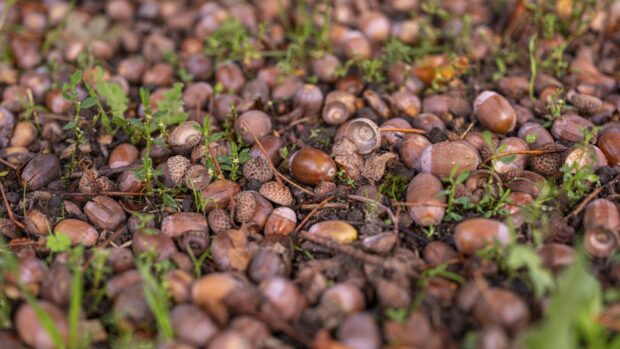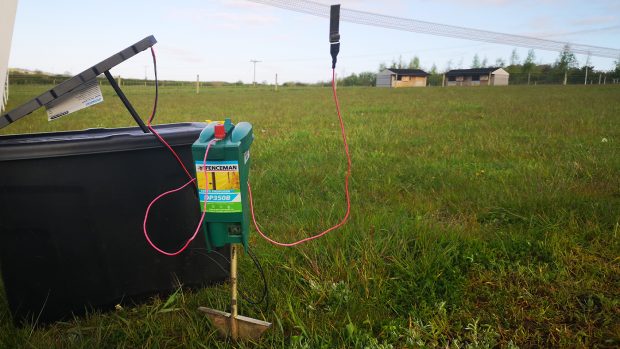This is the time of year when most equestrians become preoccupied with winter and the challenges it brings, but how much thought do you give to autumn paddock jobs?
Maintaining your horse’s turnout is a year-round responsibility, and different seasons bring different issues with them. Ahead of winter, we look to reduce the chance of poaching in gateways and feed hay without stifling grass growth. However, the weeks that precede the arrival of autumn conditions can feel a trifle miscellaneous.
Optimal grass height and coverage, secure fencing and great paddock hygiene are standards all owners aim for. The good news? There’s much you can do as we head into autumn to shore up the health of your horse’s field – not just for this season, but all year round.
Autumn paddock jobs: what you need to know
As all people with livestock know, the challenges associated with late autumn and winter arise due to deteriorating conditions. In the main, these are reduced daylight hours and wet to boggy ground conditions. What’s more, early autumn with its mild weather and increased rainfall is a time for accelerated grass (and weed) growth. The case for autumn paddock jobs being done while you have some extra daylight and the weather remains reasonably fair, is a strong one.
John Mathews of electric fence and grass mat supply company Fieldguard says: “I have clients ring me up in mind November and say “we’re knee-deep in mud, what can I do?”
“Grass mats laid in muddy gateways will go a little way to helping out, but really these are best laid in spring when you have most of the year for the grass to go through them. We still have another six to eight weeks of grass growth ahead of us, so even now is a good time to be thinking of getting some grass mats down.”
Malcolm Hughes of Logic Machinery says: “Managing paddocks is a constant cycle following the seasons – your goal is to minimise the horses’ impact on the paddock.
“There are several autumn paddock jobs you can do involving different pieces of equipment. If you’re lucky enough to have a friendly farmer close by, they might be well equipped do certain tasks for you provided they aren’t too busy!”
1. Harrowing
“This time of year is a good for running a chain or spring-tined harrow over your field. It gets rid of all the rubbish, dead grass and weeds to allow new autumn growth to come through before winter,” says Malcolm.
Harrowing also has the benefit of breaking down old manure from concentrated toilet areas, which benefits grass growth too. According to Malcolm, how you manage your paddock’s manure burden depends on how much room you have.
“If you’ve got two horses on 20 acres, you’re probably all right rotating them to different paddocks,” he says.
“If you have a lot more horses on a lot less land, manure is going to become a problem. Poo picking is a bugbear for many, and you can get machines to help you with it, but there are huge benefits that come with it.
“For one thing, you end up with large areas that the horses won’t graze. Then you get sourness in the grass and it becomes very untidy with under and overgrazing. Once it does start being collected, and the sourness comes out of the grass, they start eating bigger and bigger areas. This happens quite quickly.”
2. Rolling
Poached ground, once dry, forms ruts in paddocks that can last for seasons.
“Rolling is one of those great late summer or early autumn paddock jobs that tidies up your field. Not every paddock needs it, but I’ve seen some that are still incredibly rutted from the previous winter,” says Malcolm.
“Rolling levels the paddock, making it more comfortable to walk on. And, in conjunction with the harrowing, you’re starting to regenerate that top inch of soil for grass growth.”
According to Malcolm, rolling is best done after rain when the ground is more malleable.
3. Listen for ticking
While you might expect to hear the energiser ticking as it runs off your electric fence’s power source, hearing your fence tick elsewhere is a sign things aren’t right.
“If you can hear ticking, that’s not a good thing because it means your fence is shorting,” explains John. “It might not be obvious to the naked eye, but it’s normally quite obvious to find and in low light you’ll see a small spark as well. It means one the steel filaments running through the nylon of the line of fencing is broken.
“The current has to arc across the gap, which means the shock given the other side of the gap is significantly reduced.”
You can fix the issue by cutting a new length of nylon fence line to splice in and replace the compromised part. But make sure you’re using the right tools.
“You must never tie knots in it because there are so many bits if stainless steel going in different direction within the knot,” says John. “It’ll go tick, tick, tick and eventually burn through the nylon.”
John recommends purchasing specific, inexpensive products to connect lines of fencing, attach them to posts and go around corners.
“A joining buckle is the proper way to connect fencing,” advises John. “Where you have to turn a corner you cut the line, use a tensioner and start again. All intermediate posts should be fitted with plastic insulators to pass the fence line through.”
4. Topping
Malcolm recommends topping, or removing excess grass length, not only to improve the appearance of the paddock, but also to help break the cycle of weed growth.
“Topping helps remove soured grass that horses don’t want to graze to encourage them to start to eat it. It’ll also control the weeds to some degree.”
While owners can look to improve their grazing chemically with fertiliser and weed killer, this should only be done under professional guidance.
“You’ve just got to be careful as you can end up with more problems than you started, especially if you’re not used to using chemicals,’ explains Malcolm.
“If you’ve done the harrowing, rolling and topping, your paddocks will be looking superb and you’ll get a lot of return. You might find there’s no need for chemicals.”
As well as topping the length in the middle of your grazing, John advises you pay attention to the length of grass stems under your fencing, too.
“If vegetation touches a strand of fencing, you’ll probably hear it ticking as the circuit shorts and sends the current into the earth, so the fence won’t work as it should beyond that point.”
5. Put it to the test
Additional health checks you can give you electric fencing include checking it’s well earthed.
“A good earth stake is a piece of galvanised angle iron about a metre of so long,” explains John. “You drive it two and a half to three feet into the ground. A fence doesn’t need to be a complete circuit, it can run in a straight line or an L-shape. When the horse touches the fence, he also earths it, which completes the circuit and is why he gets a shock.”
As well as checking the state of the earthing, John also advises using a pocket tester.
“It’s a simple piece of kit. There’s a little prong that you pop into the stick into the ground, and another little prong that you put onto the fence, and it gives you a reading in volts.
“Take a reading at the closest point to where that the energiser is connected to the fence, and then work away from that. I’d normally go to the next gateway or if there wasn’t one, the next half dozen or so posts.”
According to John, an appropriate voltage for horses is from 3,000–9,000V.
“Horses will respect anything from around 3,000V, though I personally wouldn’t want to touch a fence at around the 2,000V mark!” says John.
You can expect the voltage reading to be strongest close to the energiser, and a gradual drop in the reading as you move further away. However, a sudden significant drop in voltage always warrants further investigation – whether that’s into the condition of the electric tape or rope, the way the fence is earthed or the power supplied by the energiser.
- To stay up to date with all the breaking news throughout the National Dressage Championships, Blenheim Horse Trials, Horse of the Year Show and more, subscribe to the Horse & Hound website
You may also be interested in…

Electric fencing for horses – everything you need for a temporary setup or strip-grazing

9 reasons riders love (and hate) autumn

Subscribe to Horse & Hound magazine today – and enjoy unlimited website access all year round



